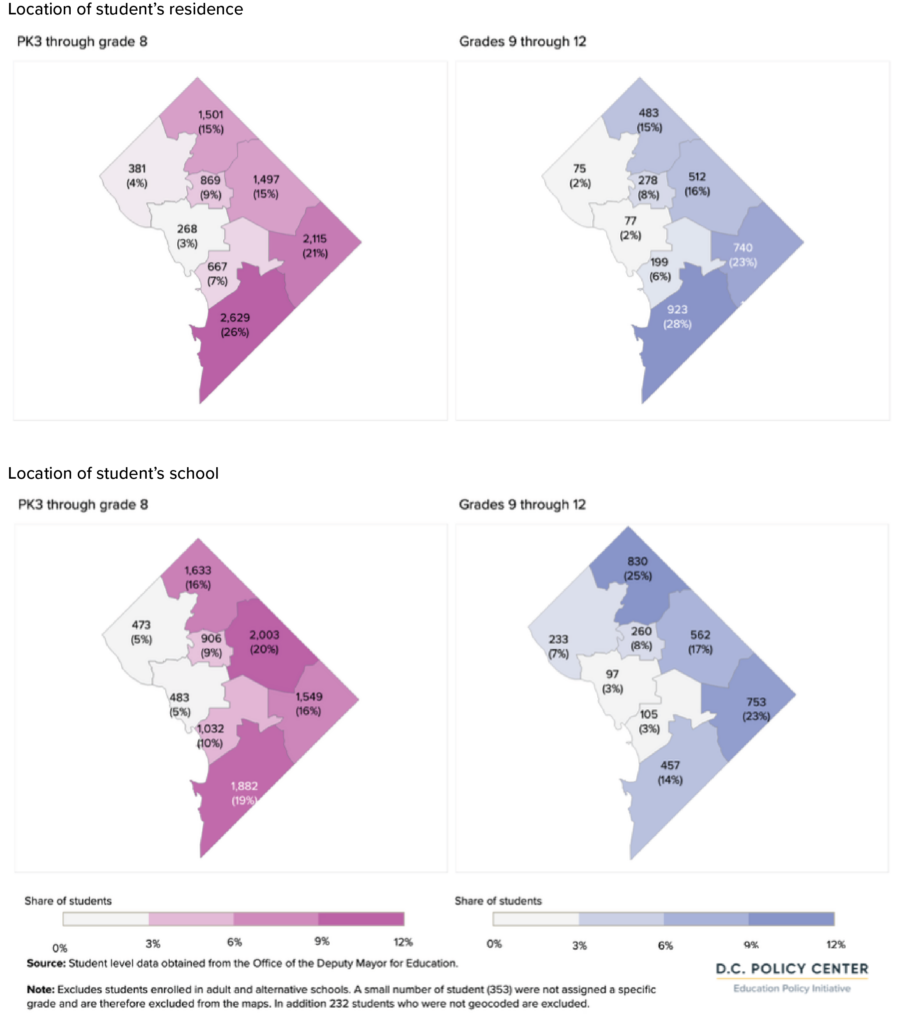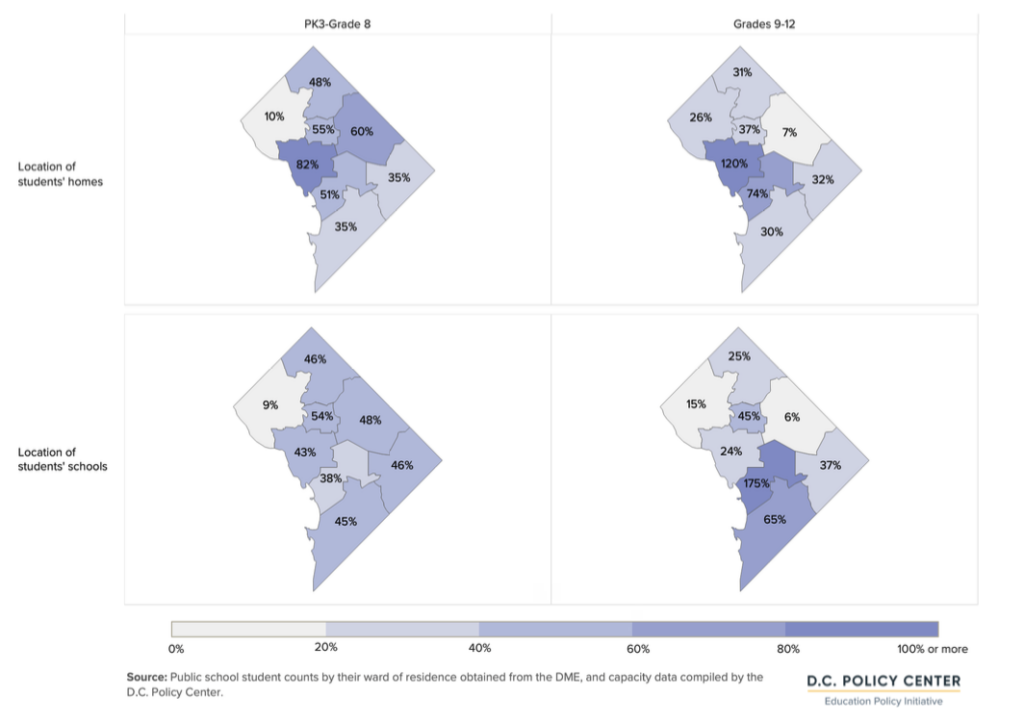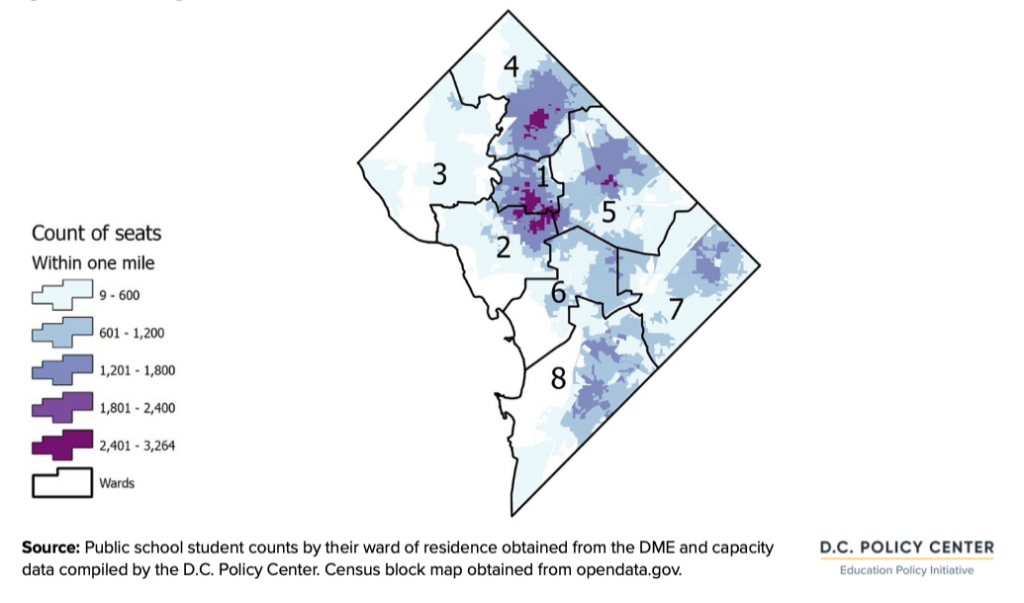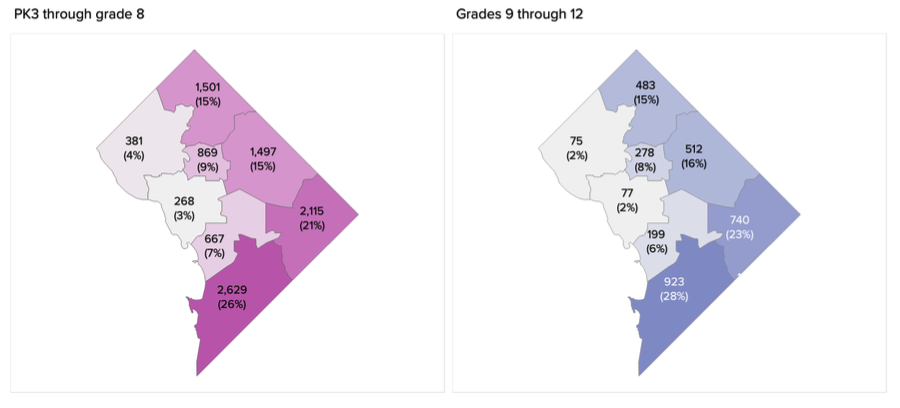

On June 7, 2023, Director of Policy and Research Emilia Calma testified during the Committee of the Whole Public Hearing on the provision of out of school time (OST) programs, and Bill 25-36, “Out of School Time Special Education Inclusion and Standards Amendment Act of 2023.” The testimony focuses on where students with special education needs live and go to school, as well as issues that will have to be addressed to increase OST access for students with special education needs. The testimony is based on a D.C. Policy Center report, Needs assessment of out-of-school time programs in the District of Columbia. You can read her testimony below, or download a PDF copy.
Students with special education needs are concentrated in Wards 7 and 8.
During school year 2021-22, 13,214 students across all grade bands (or 15 percent of public school students) were identified as students with special education needs. Of these students, 9,927 (three quarters of all students with special education needs) were enrolled at an elementary or middle school, and 3,287 were enrolled at a high school.
Wards 7 and 8, followed by Wards 5 and 4, hold significantly higher concentrations of students with special education needs compared to the entire public school student body. Wards 7 and 8 are home to 47 percent of all elementary and middle school students and 51 percent of high school students with special education needs. To compare, less than 37 percent of students with special education needs attend school in Wards 7 and 8, with many students attending schools in Wards 5 and 4.
D.C. public school students with special education needs by ward and neighborhood of residence and school location, school year 2021-22


Out of school time programs are less concentrated in Wards 7 and 8, potentially creating more competition for these seats.
There are fewer seats per student in Wards 7 and 8, where most students with special education more likely to live. Wards 7 and 8 have the highest number of OST seats relative to other wards, but these wards also have the highest number of students, resulting in lower-than-city-average seats in close proximity to students’ homes.
The existing OST seats in Wards 7 and 8 can serve 35 percent or less of students who live there. And when looking at the number of seats within a mile of where students are located more granularly, the average student in Wards 7 and 8 has less than half of the number of seats available to the average student in Ward 1 or 2.
Coverage by ward for afterschool programs, by grade band and student residence


PK3 to grade 8 afterschool seats within one mile of students’ homes


Location of programs, however, is not the only consideration for out of school time programs that serve students with special education needs. The types of programs and services provided are very important for access for students with special education needs, and not all programs provide the supports that students need.
Do out of school time programs serve students with special education needs?
OST program needs are different for students with special education needs. First, programs need to accept these students. Second, programs need to provide adequate supports. Third, they need to communicate the availability of supports to students as well as parents and guardians. The following questions should be considered as the District works to increase access to out of school time programs for students with Individualized Education Programs (IEPs) or other special education needs.
- What programs or services would accommodate students with IEPs? It is first important to understand what accommodations students with IEPs would need to participate in OST programs. This will likely vary greatly with the type of IEP and the type of program (for example, accommodations in a sports-based program will be different than a STEM program). To determine what programs and services would best accommodate the needs of students, feedback could be solicited from schools (who already accommodate the needs of these students), providers who work with these students, OSSE, or feedback from families in the form of fosuc groups or surveys.
- What programs already provide services to students with special education needs? Once it is known what services will accommodate students with IEPs (something that will likely vary with the level of the IEP), it can be determined which providers already meet this standard of care, and which need additional training or resources. These levels of service can then be communicated to families searching for OST programs.
- How to communicate the services provided by programs? Parents and guardians frequently mentioned difficulties finding information about accommodations for students with special needs. The main tool currently developed by the District, Learn24, is not a main source of information for parents and guardians in the District. Instead, parents and guardians most frequently get information about OST programs from schools, program websites, and social media. The District will have to consider a way to communicate what programs accommodate students with special learning needs once standards of care are established. Some possible hubs of communication include schools, OSSE, or the future platform MyAfterschoolDC.
- How would programs know about accommodations needed by students with special education needs? The Family Educational Rights and Privacy Act (FERPA) prevents schools from sharing information about students special education needs with third parties, including OST providers. As not all students will need these accommodations, the District will have to consider how to communicate to OST providers when accommodations and additional services are needed.
Detailed information about where students in D.C. live and go to school, where OST programs are located, potential gaps in OST coverage, information about OST providers, and the experience of parents and guardians can be found in our report, Needs assessment of out-of-school time programs in the District of Columbia. Thank you for your time. I look forward to answering any questions you may have.
